This Champagne Might Be One of the Most Famous Luxury Brands in the World, Here's What Actually Makes It So Special
Plus, everything you need to know about Dom Pérignon Rosé and Plénitude 2.
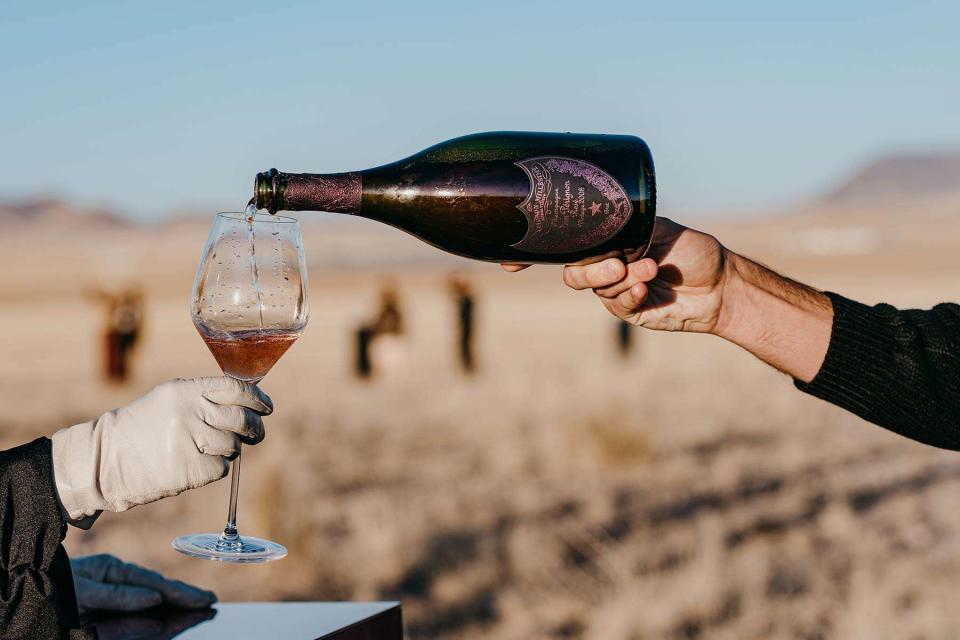
Courtesy of Dom Pérignon
Dom Pérignon is one of the most famous luxury brands in the world, but for all the name recognition, many buyers are unfamiliar with Dom Pérignon's distinctive winemaking style and the breadth of its Champagne products.
A key fact for any Champagne appreciator to know is that Dom Pérignon is a vintage-only Champagne house. That means the brand only uses grapes from a single "vintage" — the wine term for a year — in each release. This stands out because most other makers produce non-vintage Champagnes, combining harvests from different years to achieve a house style. This method ensures that that a Champagne will taste the same every year, no matter the weather conditions or any other factor that impacts a harvest.
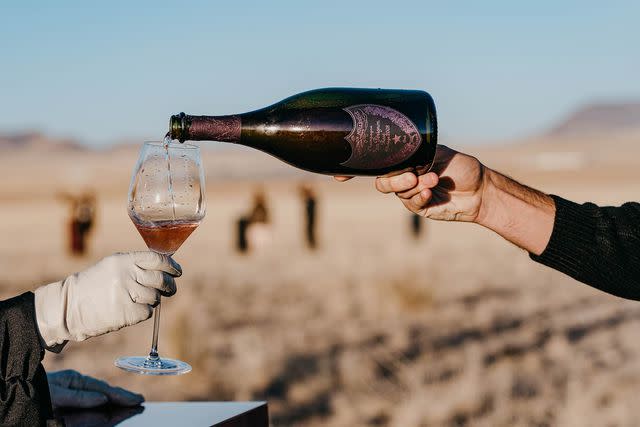
Courtesy of Dom Pérignon
In the very best of years, other houses will produce a vintage Champagne. But Dom Pérignon's exclusive focus on vintage product makes it stand out from the crowd. Chef de cave (or cellar master) Vincent Chaperon strives to capture each vintage’s nuances and push the boundaries of Champagne while producing a wine that is unmistakably Dom Pérignon — every release is different, and that’s the point. Each sip transports you deep into the heart of Champagne and back in time to the year the grapes were grown.
Though Dom Pérignon is known by most for its iconic vintage Champagne, there are other products worth searching for. In certain vintages, the house produces a rosé Champagne, and it has two older wines as well: Plénitude 2 and Plénitude 3. In an exclusive interview, Chaperon shared why these Champagnes are so special, and how they can uniquely express a sense of place.
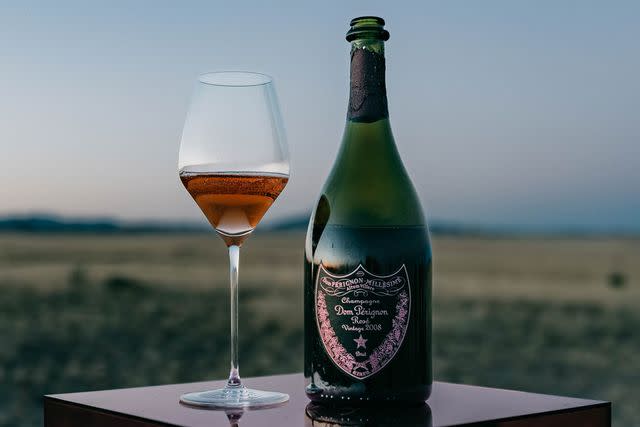
Courtesy of Dom Pérignon
Rosé Champagne celebrates pinot noir grapes, and is generally much more powerful and fruit-forward than most Champagnes. The most recent rosé vintage, 2008, was the first rosé that Chaperon oversaw since becoming chef de cave. The year is noted as one of the finest years in Champagne history, making this rosé a particularly special release.
“As the archetype of a classic year in Champagne, 2008 offered a dream chance to explore," Chaperon explained. "We ventured to experiment with all the nuances of the pinot noir grape, revealing the radical essence of Dom Pérignon Rosé Vintage 2008. The fruit asserted itself with remarkably intense aromatic persistence, and a composite consistency that opened up an exciting array of possibilities. The quest for harmony that defines Dom Pérignon is crafted here from contrasts and oppositions that sometimes border on contradiction.”
Further adding to the Dom Pérignon story is how long its products age. All Champagne must age for at least 15 months in the bottle before release, but luxury brands take this further. At Dom Pérignon, most releases age for at least seven years, and in certain vintages, the house sets some bottles aside to age even longer. Plénitude 2 ages for around 15 years in the bottle before release; this lengthy period of time allows the Champagne to develop more complexity, transforming into something new. “After close to 15 years, the wines rise to new heights, expressed across every dimension: it is wider, deeper, longer, more intense, with greater longevity. This is Plénitude 2,” Chaperon said.
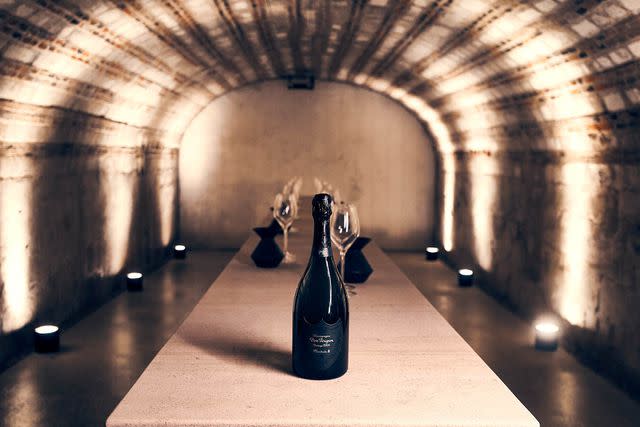
Courtesy of Dom Pérignon
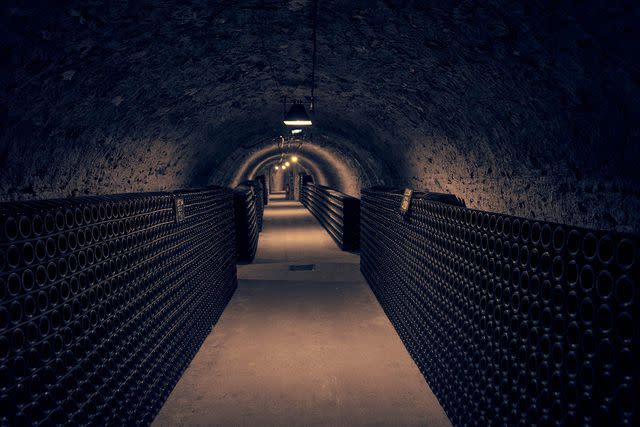
Courtesy of Dom Pérignon
The most recent Plénitude 2 is the 2004 vintage, which aged for even longer before release. “Eighteen years of maturation has given the wine its character, but it has also allowed the vintage to be revealed, reinforcing a glorious minerality," Chaperon continued.
Many consider Champagne to be a drink for special occasions and for toasts, but it’s actually a spectacular wine to enjoy throughout a meal, and each vintage has its own natural pairings. Chaperon says the structure and body of the Rosé Vintage 2008 “invite us to go deeper into spiciness,” while the minerality of Vintage 2004 Plénitude 2 pairs quite broadly with different cuisines. “It’s always a thrill to see Plénitude 2 elevated by innovative dishes from masters of gastronomy such as Thomas Keller at The French Laundry, Niki Nakayama at n/naka, and Yoshihiro Narisawa at Narisawa,” Chaperon noted.
A wine’s terroir — another notable factor in Champagne appreciation — might be loosely defined as a sense of place and how the weather, soil, climate, and vineyard location affect its taste. The Champagne region has a unique terroir that influences the final wine, to the level that Champagne is prized above sparkling wines from other regions, even when they are made in the same style.
Though the Champagne region is Dom Pérignon’s home, the brand frequently will debut a new vintage in a far-flung location — think Iceland, Hawaii, and even Marfa, Texas. It's a creative and dramatic way to widen its audience, to welcome more members to its flock.
“Dom Pérignon reinvents itself with every vintage," Chaperon said. "Each one is a unique creation, a harmonious dialogue between the character of the year and the signature of Dom Pérignon. For us, an exceptional location acts as a medium to express and accentuate that which makes each vintage so singular.”
You can purchase Dom Pérignon Champagne (and others) at select wine shops, but for an experience that truly transports you, Chaperon recommends sipping Dom Pérignon in very specific places: Atomix in New York City; Singlethread in Healdsburg, California; and Californios in San Francisco.
“Champagne is culture, creation, imagination, history, and projection," Chaperon said. "I believe that Dom Pérignon is always growing, and I want to keep pushing its boundaries.”
For more Travel & Leisure news, make sure to sign up for our newsletter!
Read the original article on Travel & Leisure.

